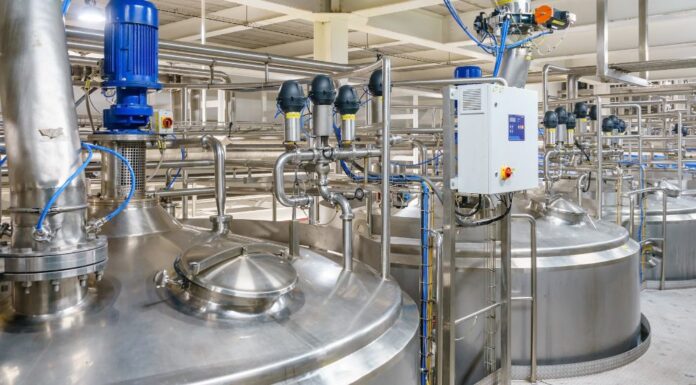Chemical manufacturing is an inherently high-risk industry due to the presence of reactive substances and complex work processes. Understanding and implementing key safety practices for chemical manufacturing worksites keeps employees safe and prevents environmental and business harm. Explore the following guidelines to ensure proper storage and handling of hazardous chemicals at your worksite.
Using Personal Protective Equipment
Employers must provide appropriate personal protective equipment (PPE) to employees based on the environmental risks. Without PPE like gloves, goggles, and respirators, workers are vulnerable to hazardous exposures. Each piece of PPE must meet industry standards for chemical resistance and durability, offering the first line of defense against spills, splashes, and fumes.
Employers must also provide training for proper PPE use. Workers should understand when and how to don each item correctly to ensure its effectiveness. Employers and employees should perform regular checks and replace PPE as needed to keep the equipment in optimal condition.
Maintaining an Organized and Orderly Facility
An organized work environment is vital for preventing accidents. Clutter and disorganization can lead to spills or unintended reactions, putting workers’ safety at risk. By keeping work areas clean and pathways clear, employees can move safely and swiftly, especially in emergency situations.
Beyond mere tidiness, organized storage systems prevent cross-contamination and inadvertent chemical mix-ups. Clearly labeled and logically arranged chemicals decrease the risk of mistakenly using the wrong substances. Hazmat storage is important for site safety because it minimizes the risks of fumes and spills by keeping hazardous materials secure.
Communicating Hazards Clearly
Understanding chemical manufacturing hazards and how to mitigate them is essential for all worksite safety practices. Hazard communication keeps all team members aware of the potential risks so they can take the necessary safety precautions.
Use the following tips to communicate hazards clearly:
- Utilize clear signage: Strategically place signs with bold, readable fonts and universally recognized symbols to alert workers to dangers and prevent accidental exposure.
- Conduct regular safety meetings: Hold frequent briefings to review safety protocols and discuss any recent changes in handling hazardous materials.
- Provide comprehensive training: Equip employees with thorough and updated training on recognizing and managing risks associated with the chemicals they handle.
- Implement a hazard communication program: Develop and maintain a program that outlines specific communication strategies, including labeling and data sheets, for consistent hazard information dissemination.
When dealing with chemical manufacturing, no matter what the safety hazard may be, it’s critical to understand incidents and accidents.
Implementing Advanced Safety Measures
Investing in technology can empower timely interventions before threats escalate. For example, automated monitoring systems offer real-time data on environmental conditions and warn management of potential hazards.
Alongside technology, administrative controls enhance safety at the procedural level. Administrative controls include safety checks, routine audits, and comprehensive training programs. As an added benefit, instituting these practices strengthens the worksite’s safety culture, promoting awareness and vigilance among employees.
Using PPE, maintaining an organized facility, communicating hazards, and leveraging technical and administrative safety features help ensure employees can handle chemicals safely. Implementing rigorous safety measures protects every team member and safeguards operations against disruptive incidents. Follow these safety protocols to enhance employee well-being, industrial compliance, and production flow.


